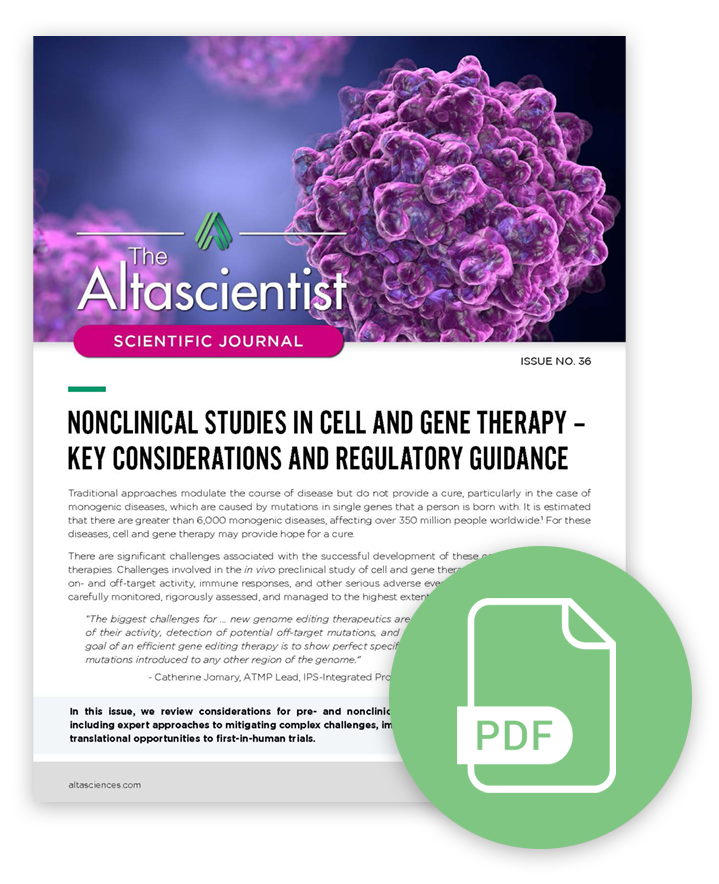The Altascientist Issue 36: Navigating the Key Considerations of Your Nonclinical Cell and Gene Therapy Studies
Recent advances in gene therapy have allowed us to approach diseases differently than medicines and surgery—they are “living drugs” that provide cures for a number of conditions by terminating the disease process at the cellular or genetic level. It is estimated that there are over 6,000 monogenic diseases, affecting over 350 million people worldwide; for these diseases, cell and gene therapy may provide hope for a cure.
However, there are significant challenges associated with the successful development of these complex, leading-edge therapies. The in vivo nonclinical study of cell and gene therapies includes a thorough understanding of on-and-off-target activity, immune responses, and other adverse events just to name a few. All of which require careful monitoring, and rigorous assessments.
In Issue 36 of The Altascientist, we take a deep dive into the essential factors in the development of nonclinical cell and gene therapy—including insights into mitigating complex challenges and maximizing translational opportunities to first-in-human trials. This comprehensive publication covers the following:
- ICH S-12 guideline on biodistribution studies
- species selection
- choosing the right vector for your cell and gene therapy studies
- the importance of germline mitigation
- exaggerated on-target effects
- immunogenicity
- nonclinical study planning
- case studies from Altasciences
Listen or read The Altascientist Issue 36 on altasciences.com, or wherever you listen to podcasts:

GENE THERAPY VS. CELL THERAPY: WHAT IS THE DIFFERENCE?
Gene and cell therapies are often discussed together, but they are not always interchangeable. Some therapies are considered both cell and gene therapies, as they alter genes in specific types of cells.
Gene therapy involves introducing or substituting a faulty gene. There are three primary vectors employed in gene therapy: adeno-associated virus (AAV), adenovirus, or lentivirus vectors.
Cell therapy, on the other hand, involves the injection of living cells (either autologous or allogeneic) into a subject. This encompasses immunotherapy, oncology, and regenerative medicine. Examples of cell therapies include CAR-T and natural killer (NK) cell therapies.
what is the altascientist?
The Altascientist is a scientific journal written by the scientific and research experts at Altasciences. In each issue, they share their decades of knowledge to help sponsors along their early-phase drug development journeys, as well as explore the latest challenges and innovations in the industry.
Explore the full collection of The Altascientist in our Resource Center, or listen to each issue on our audiobook player.